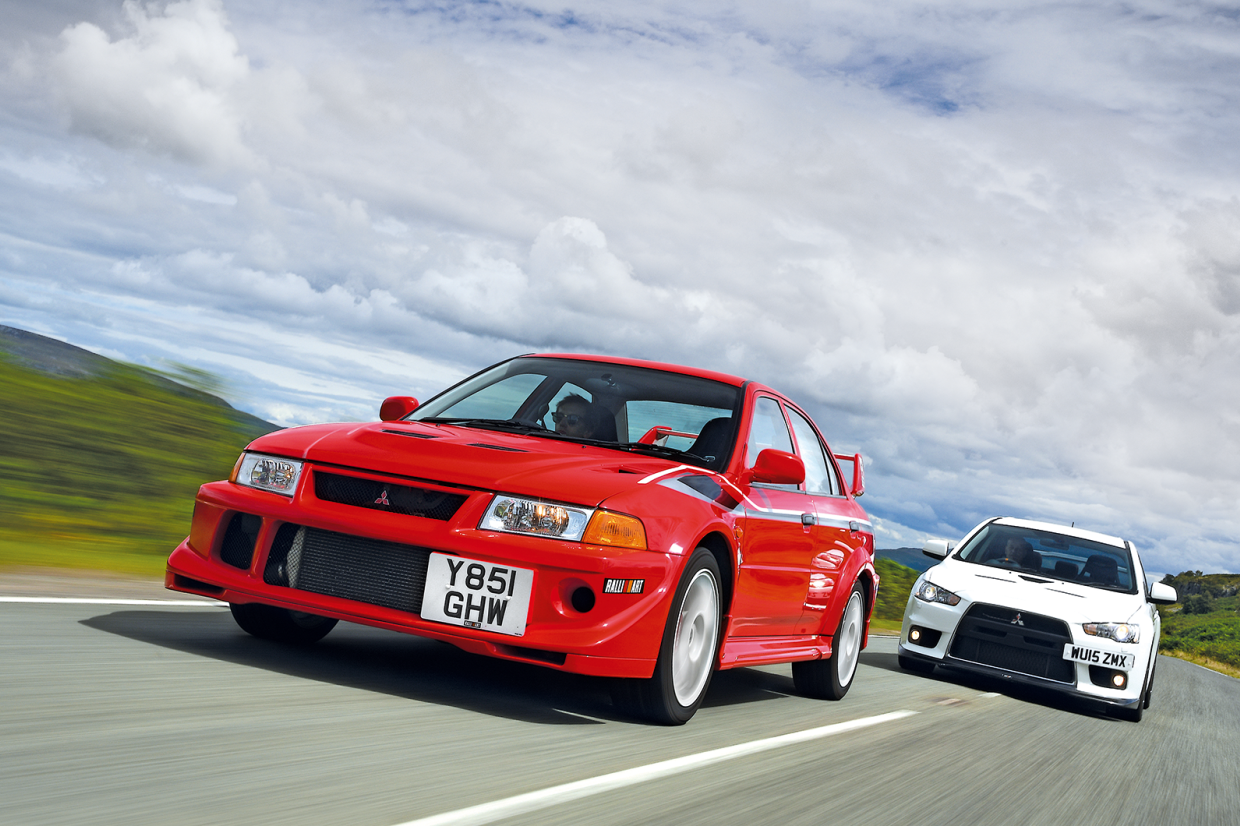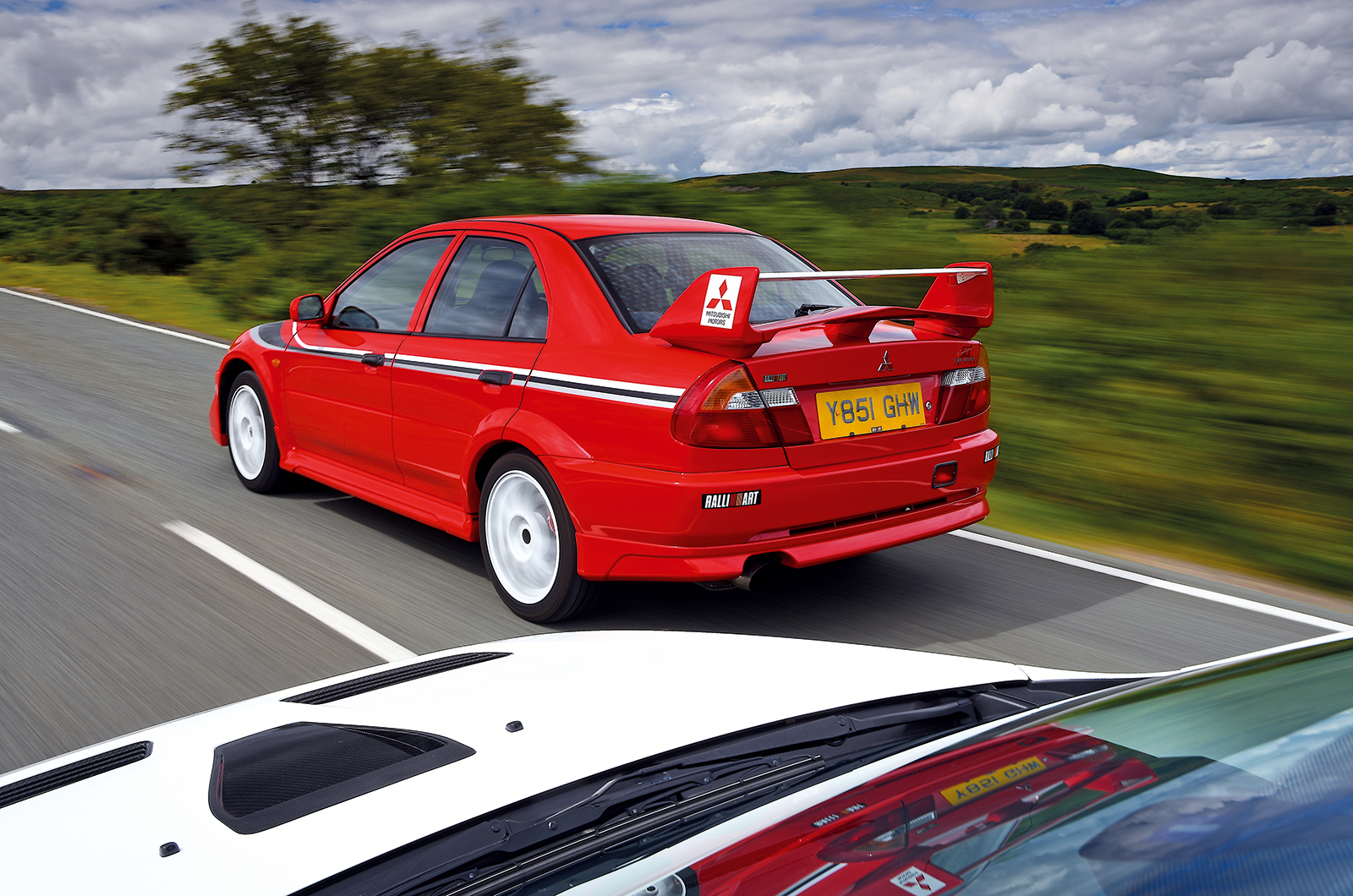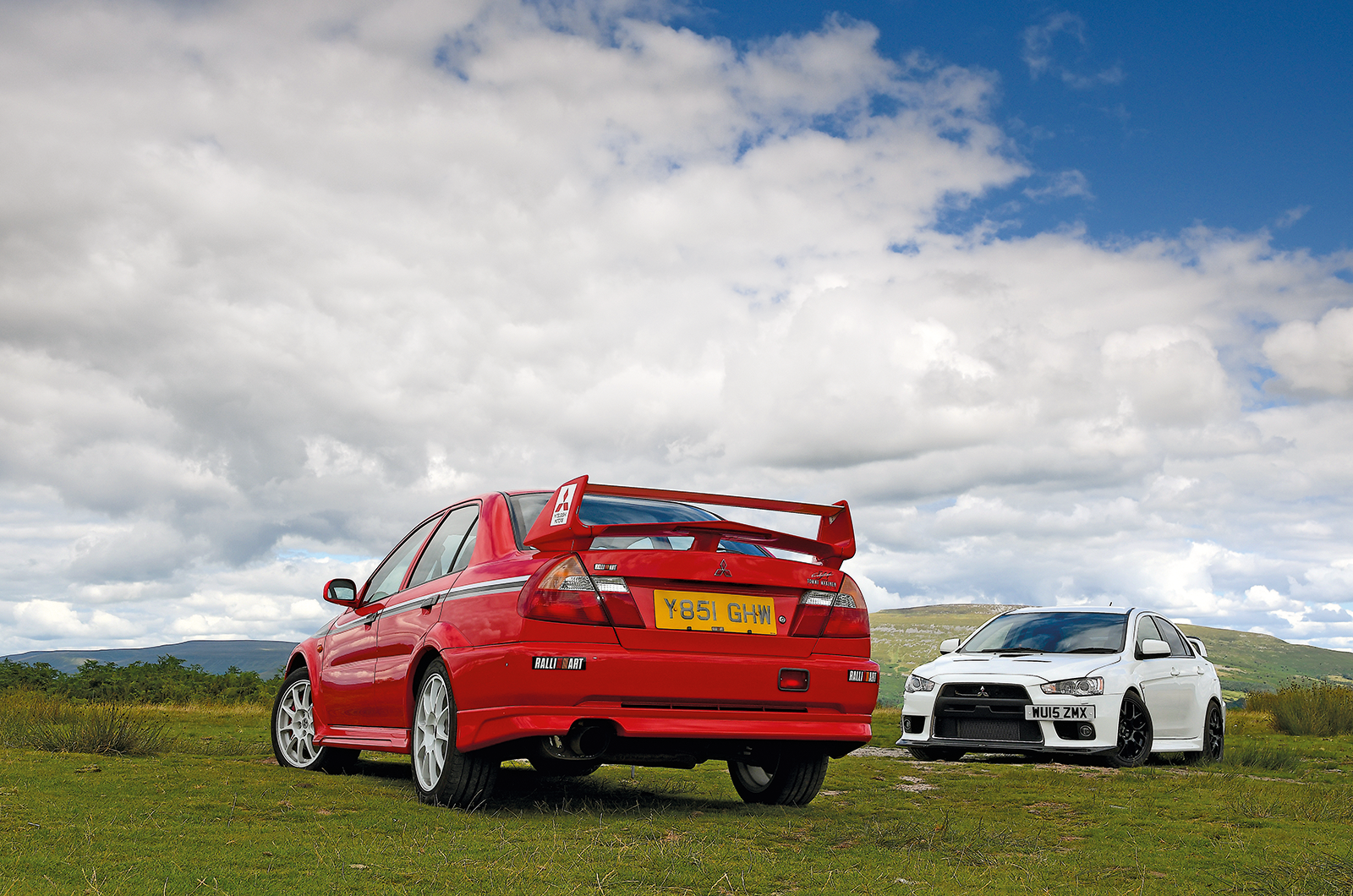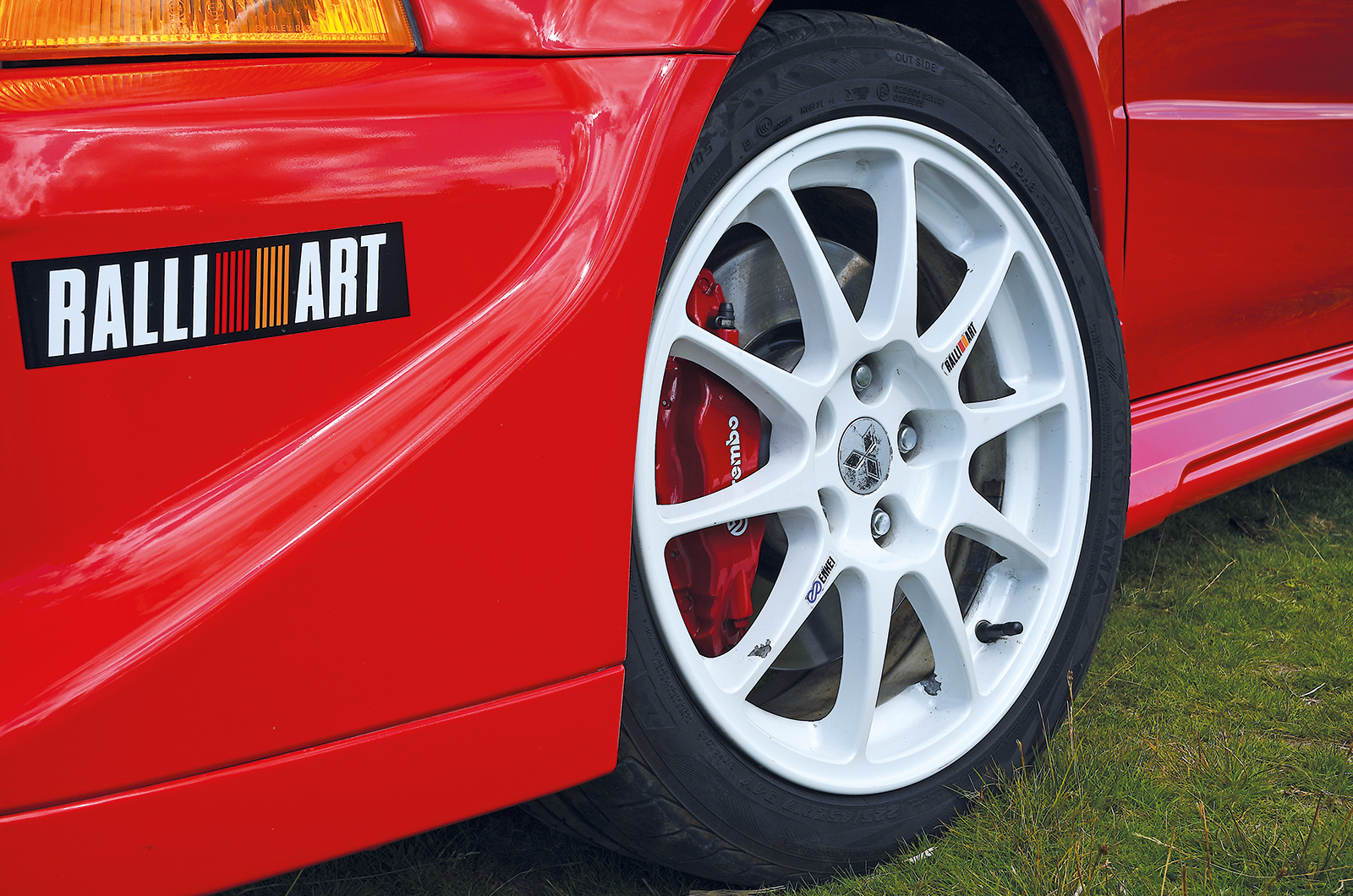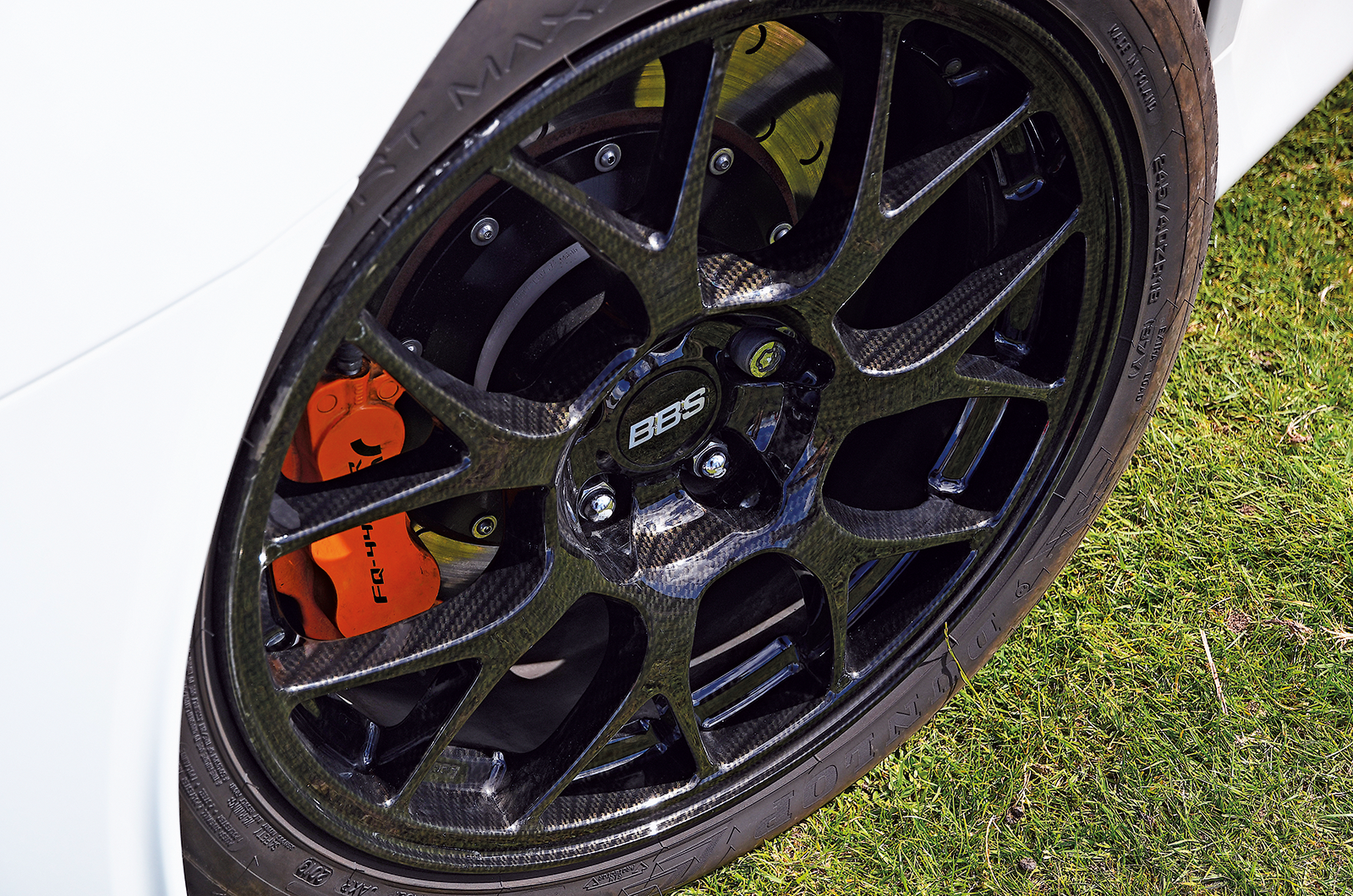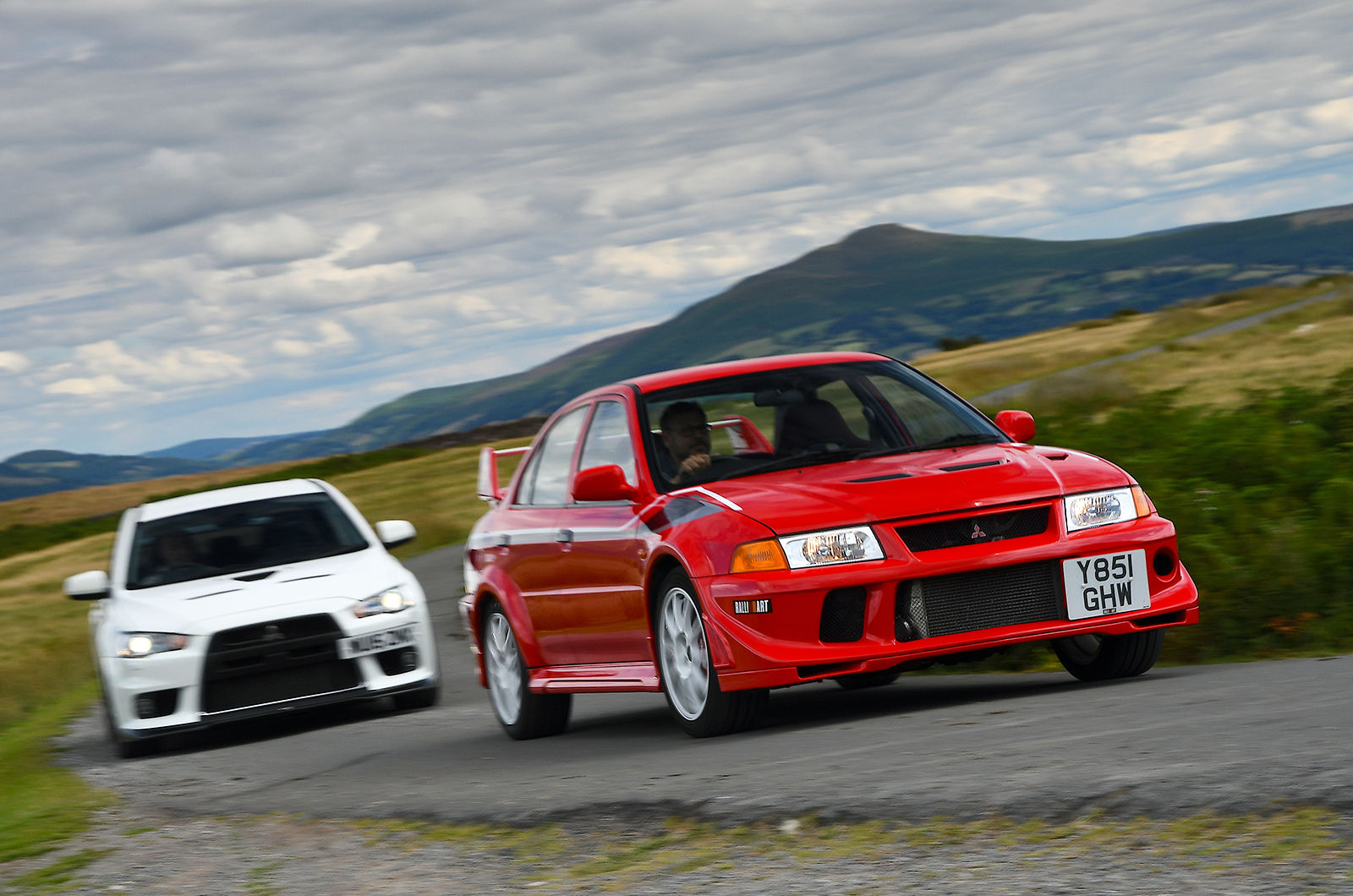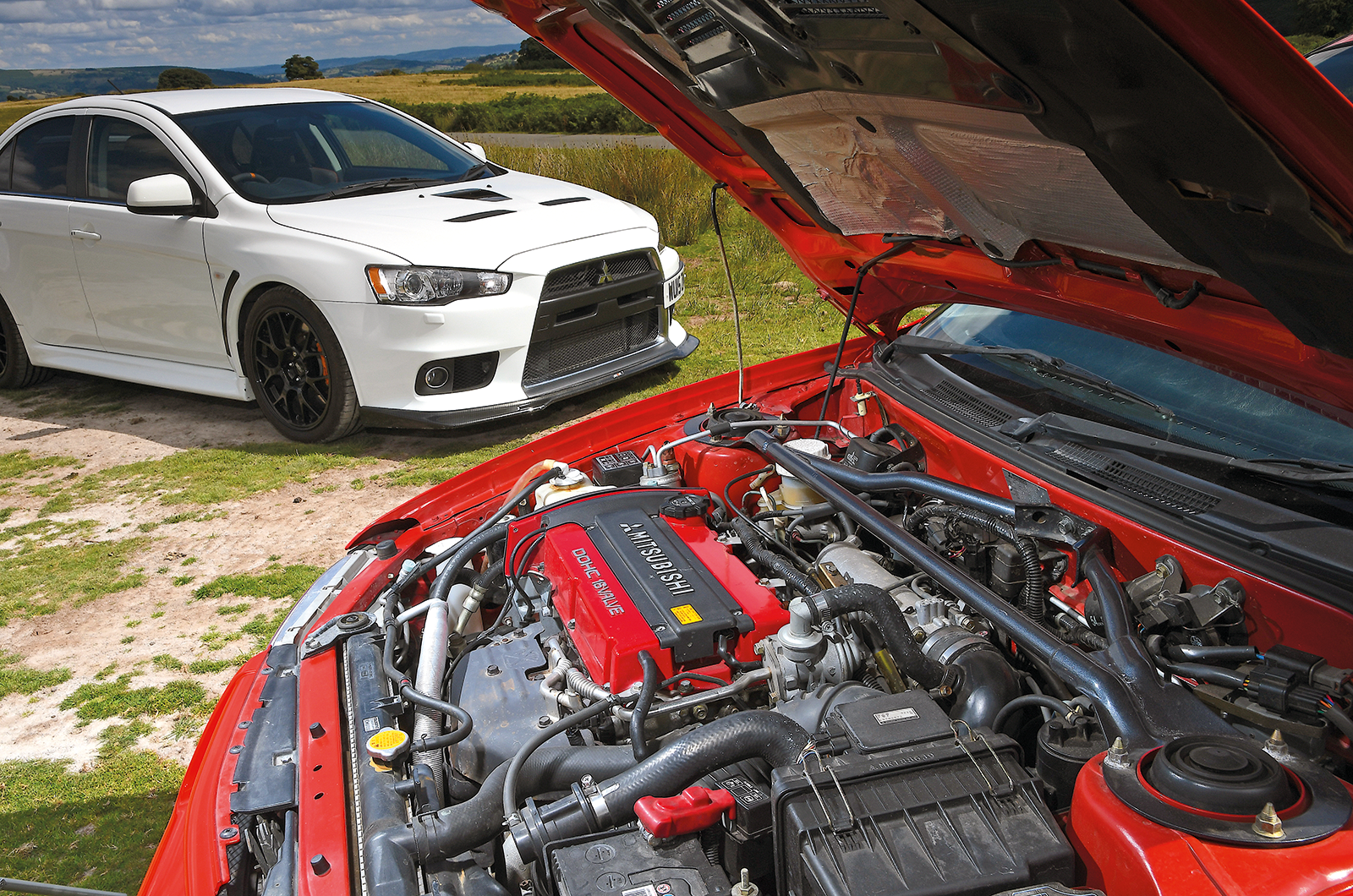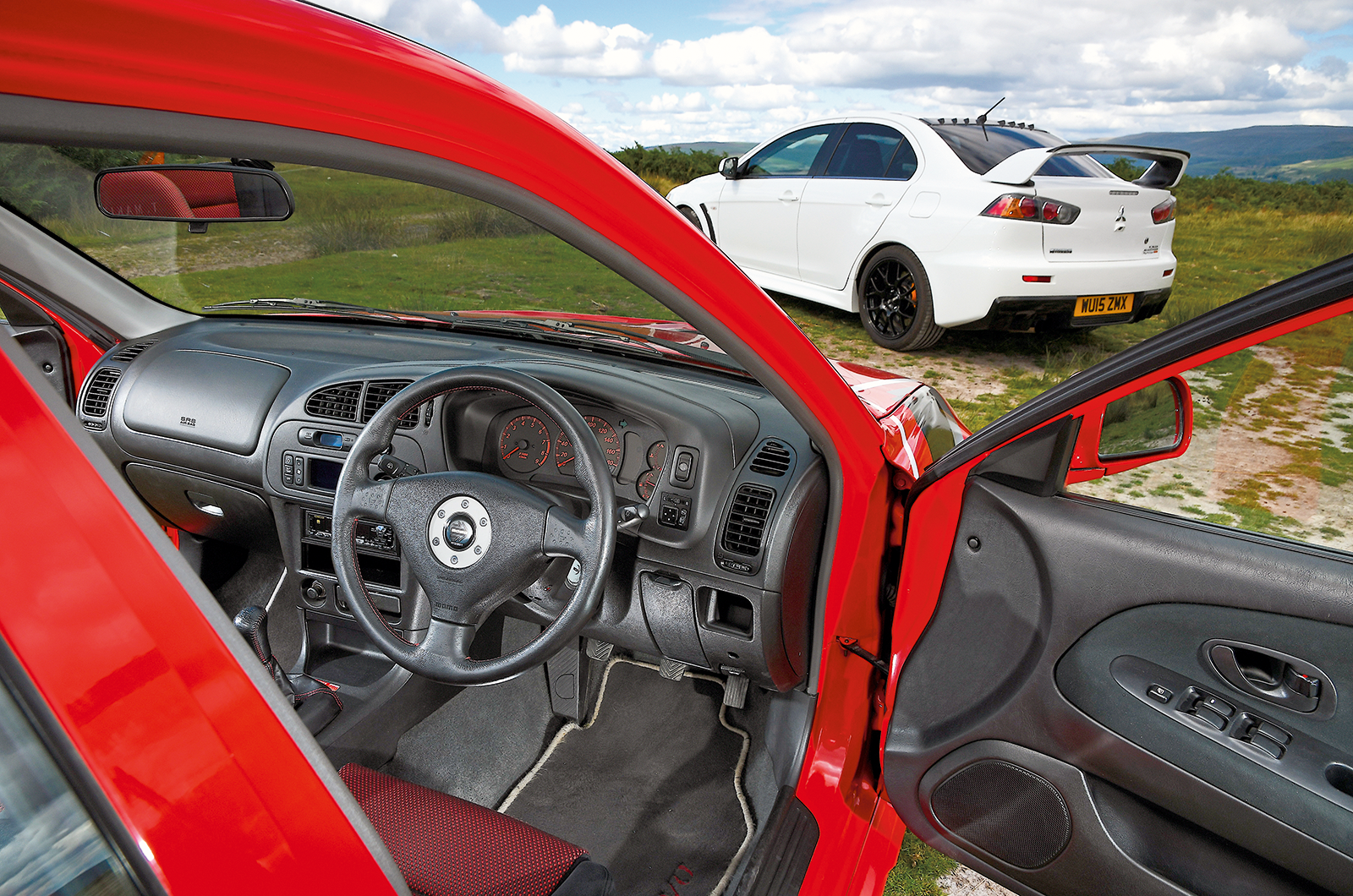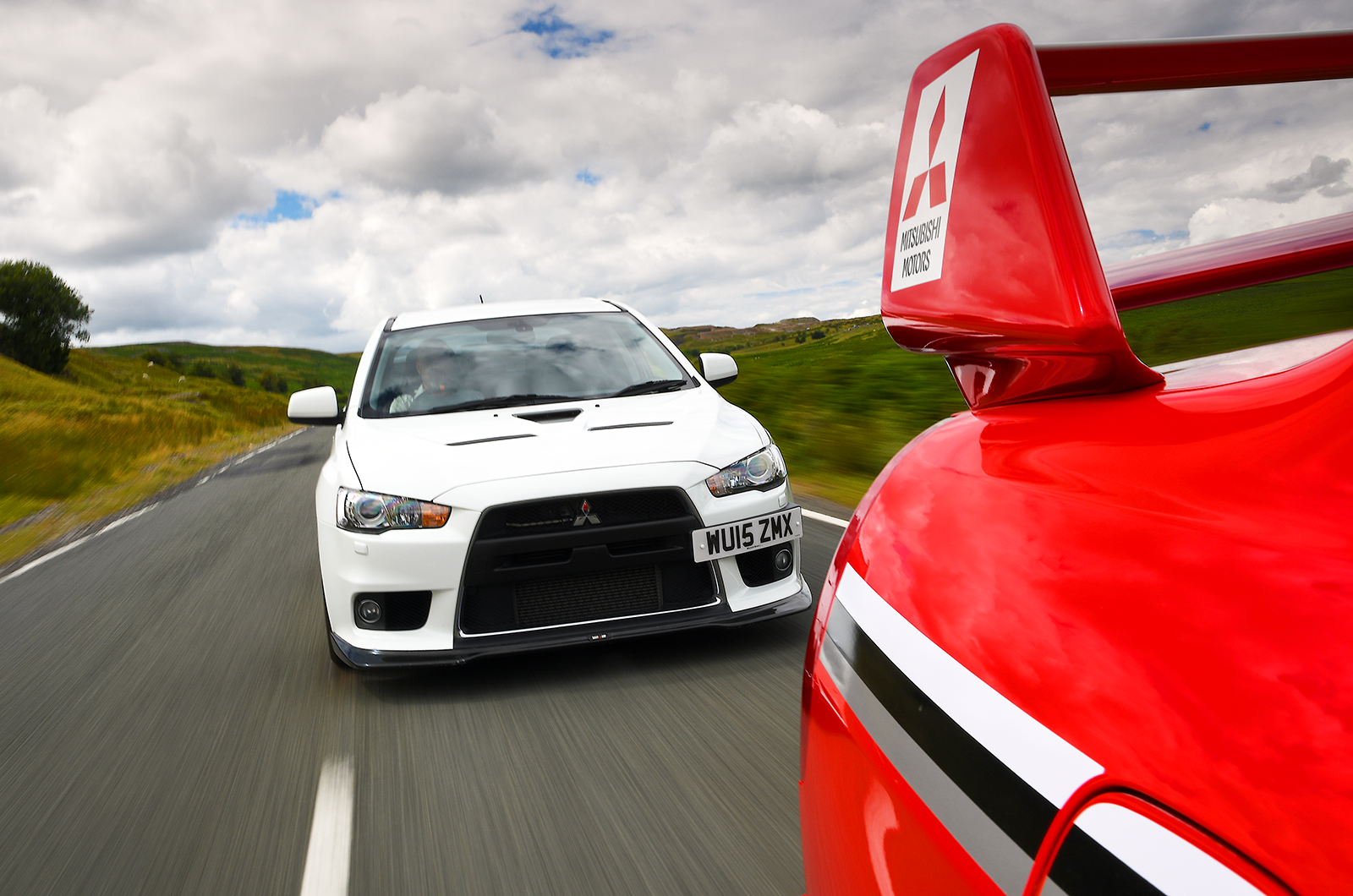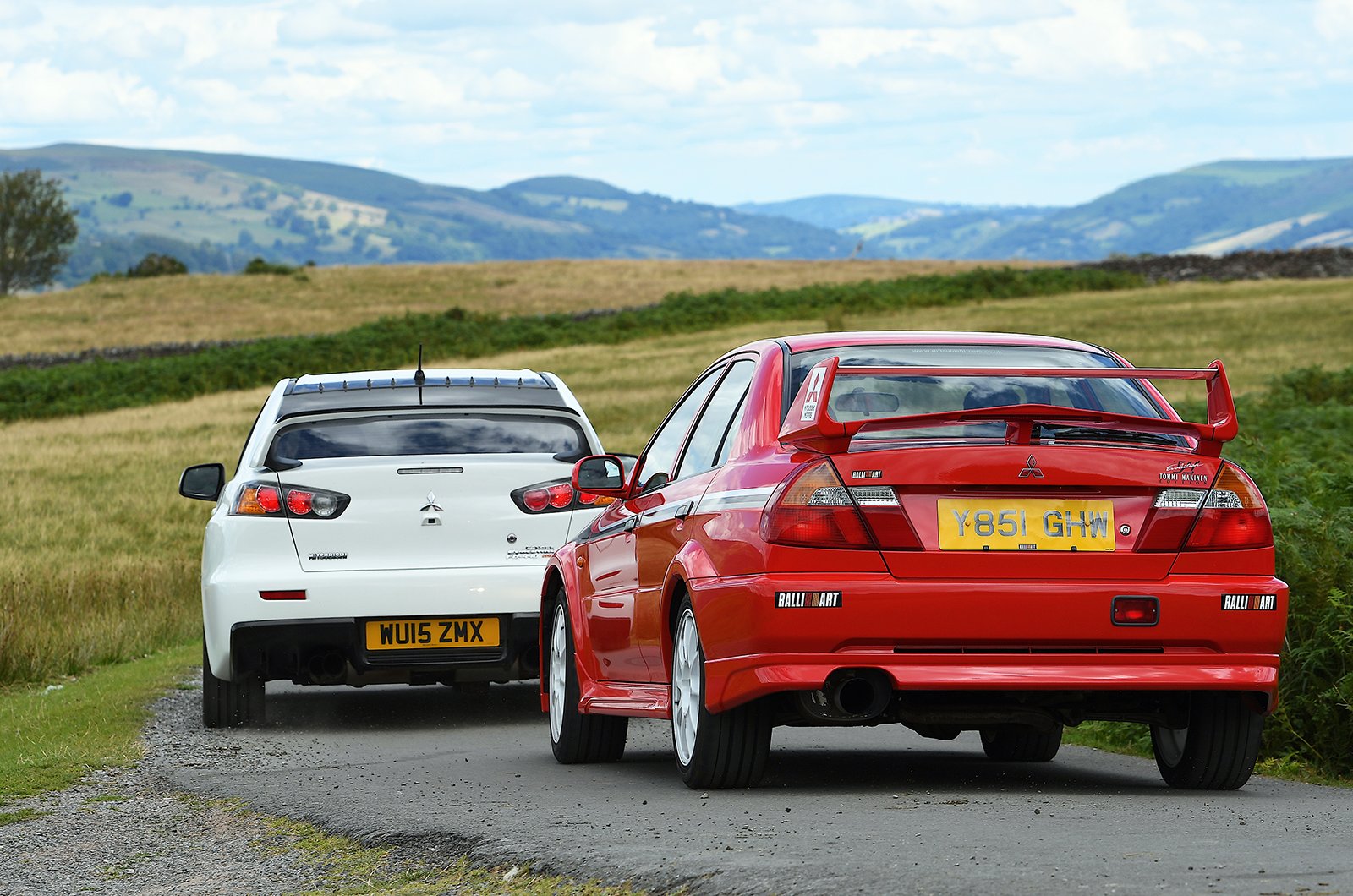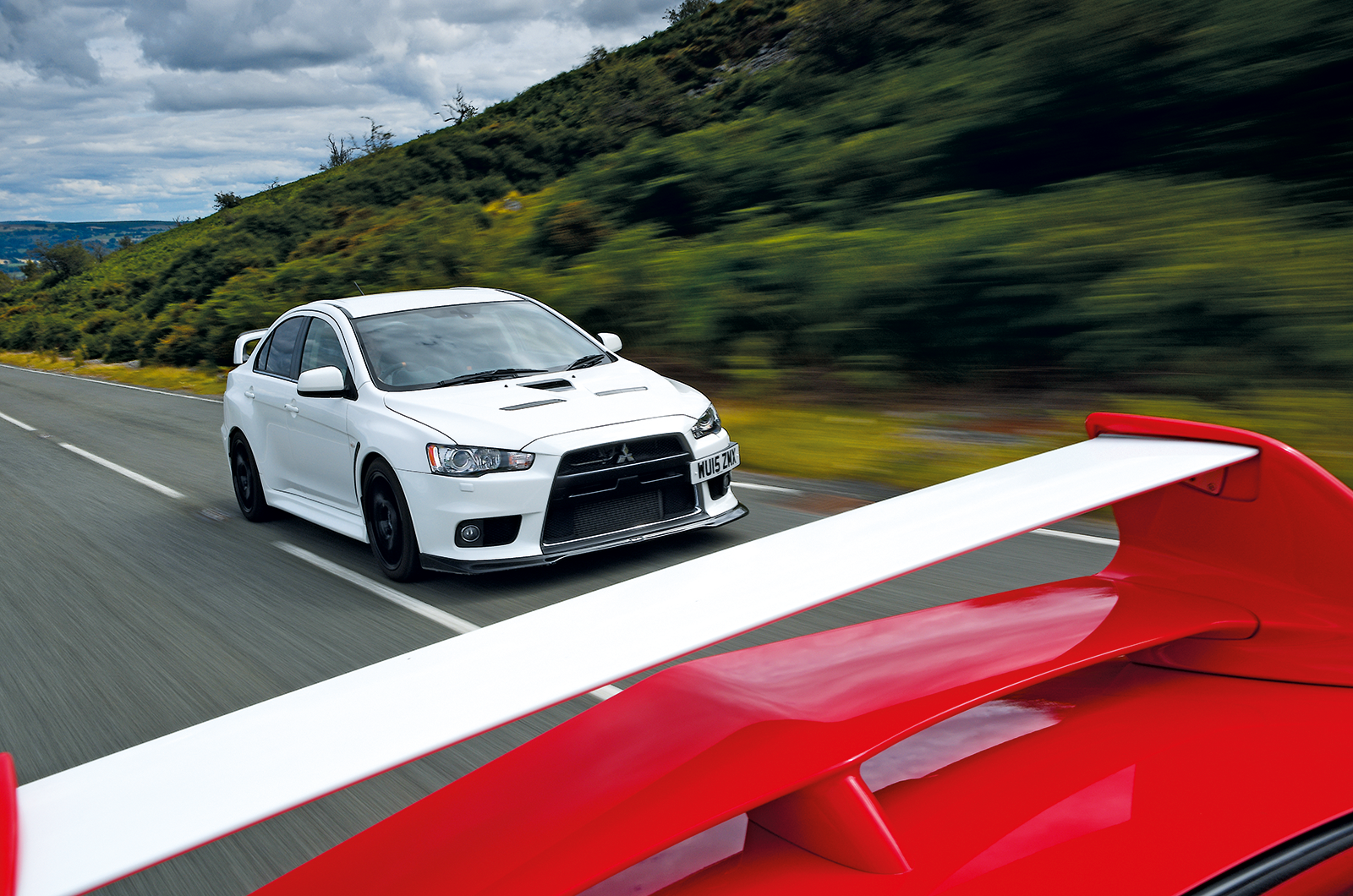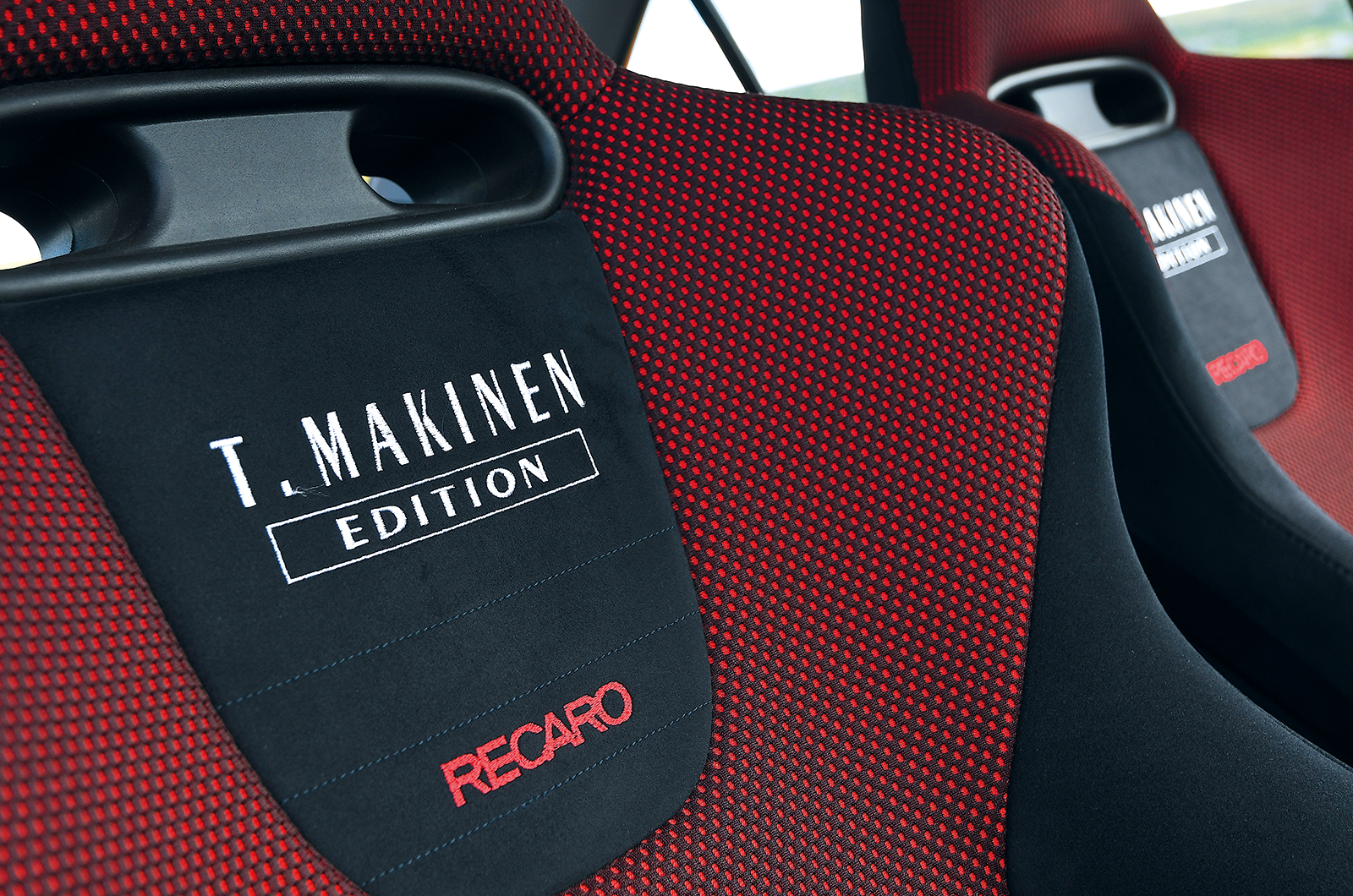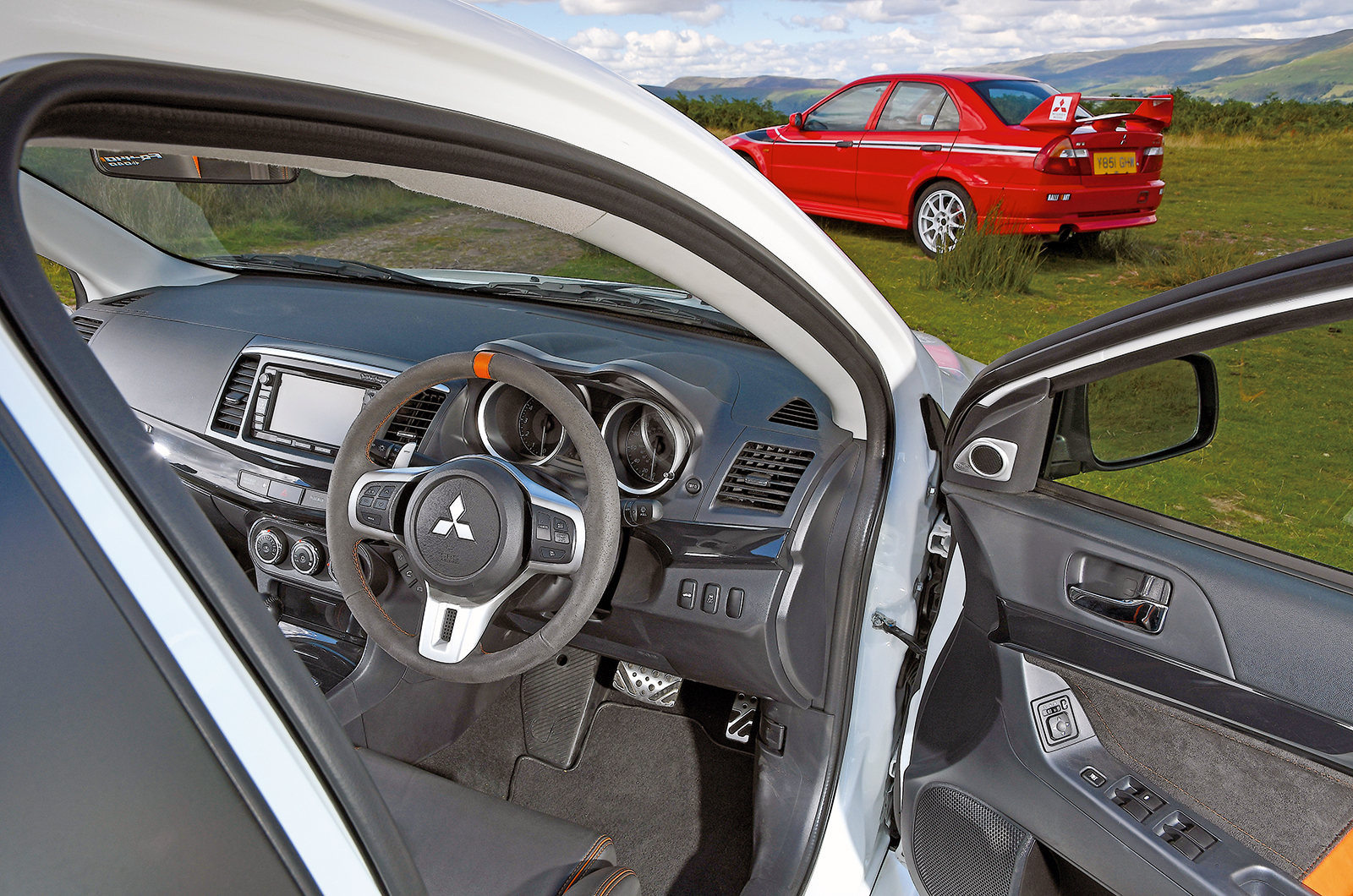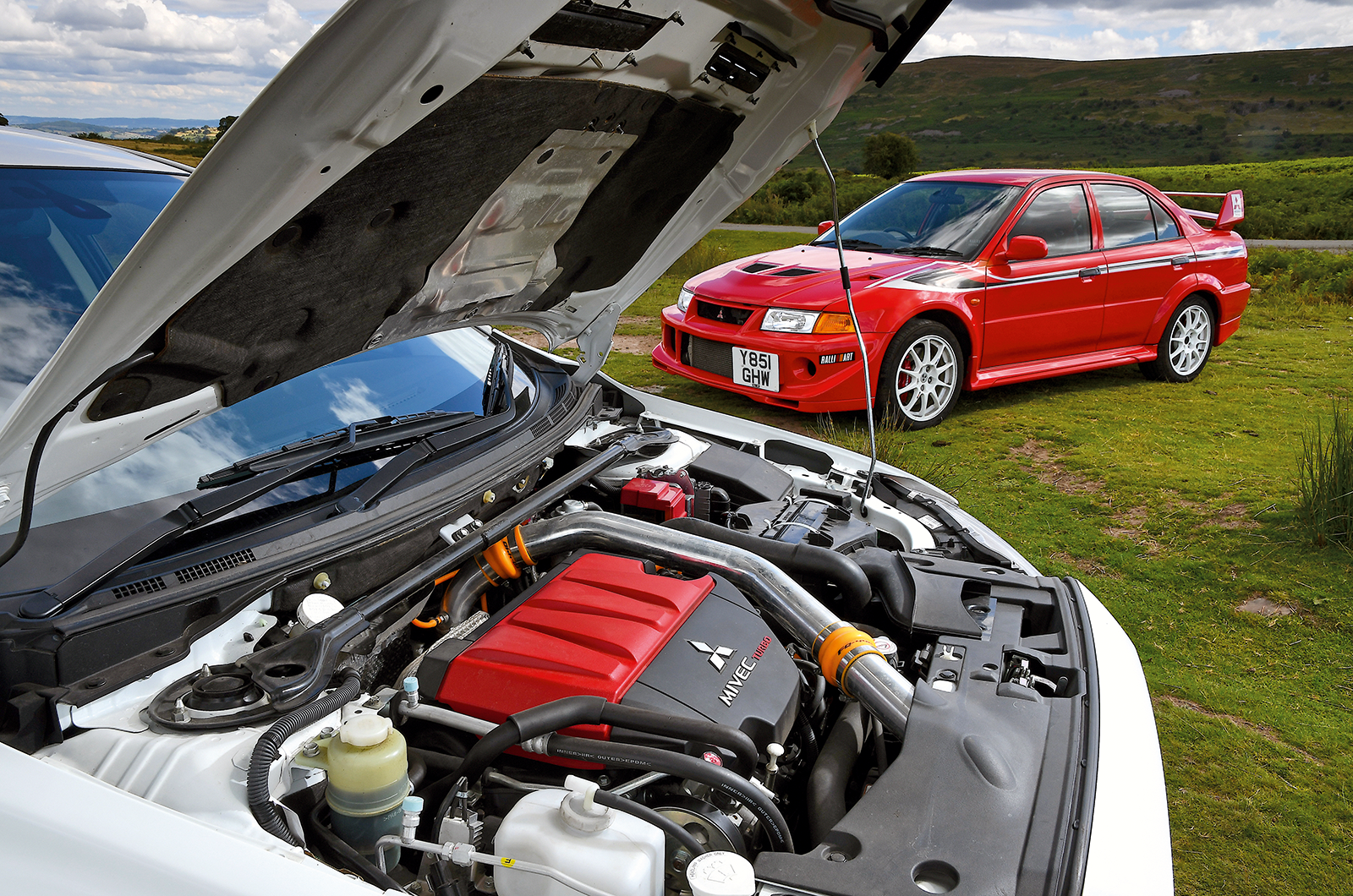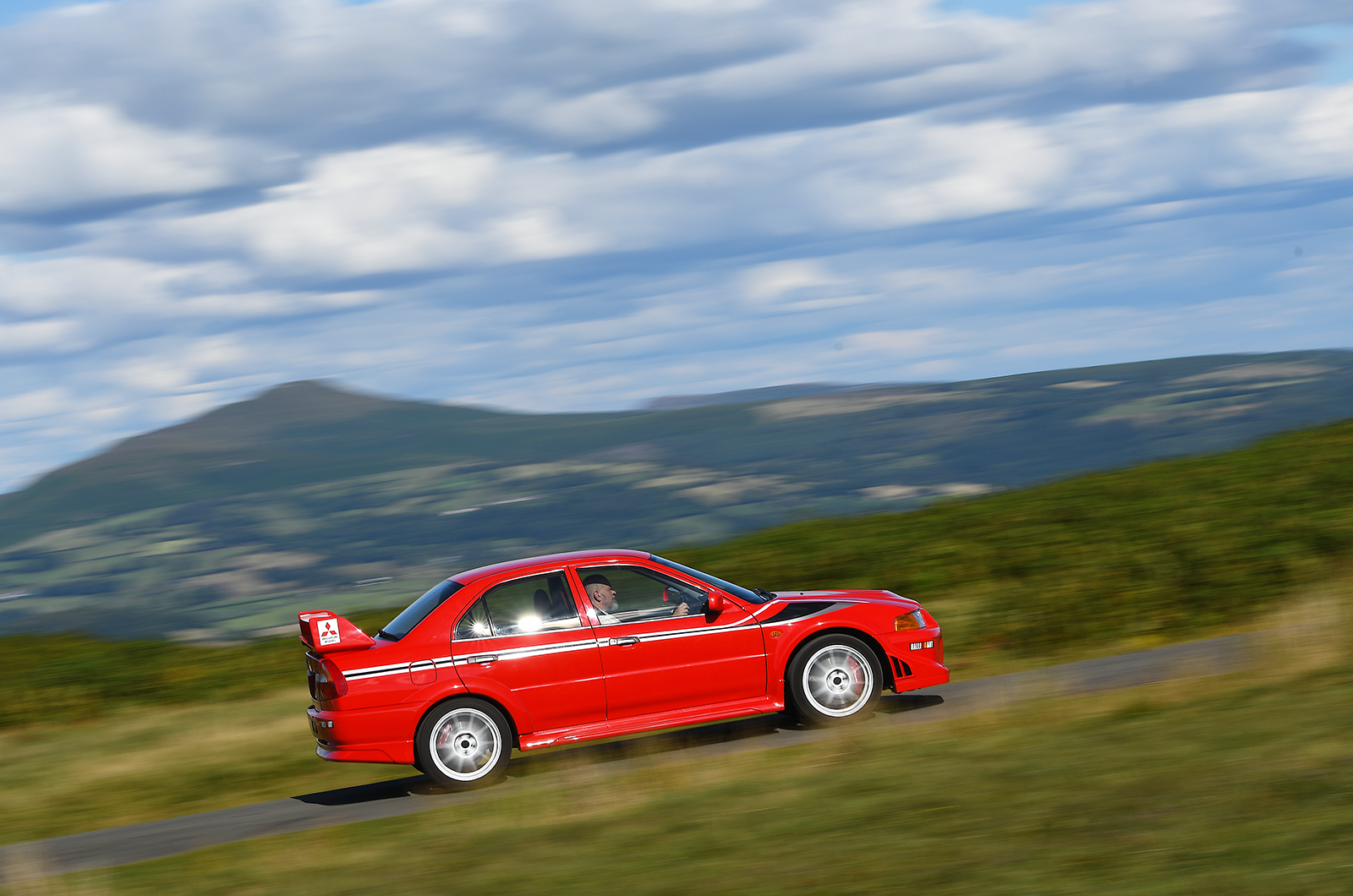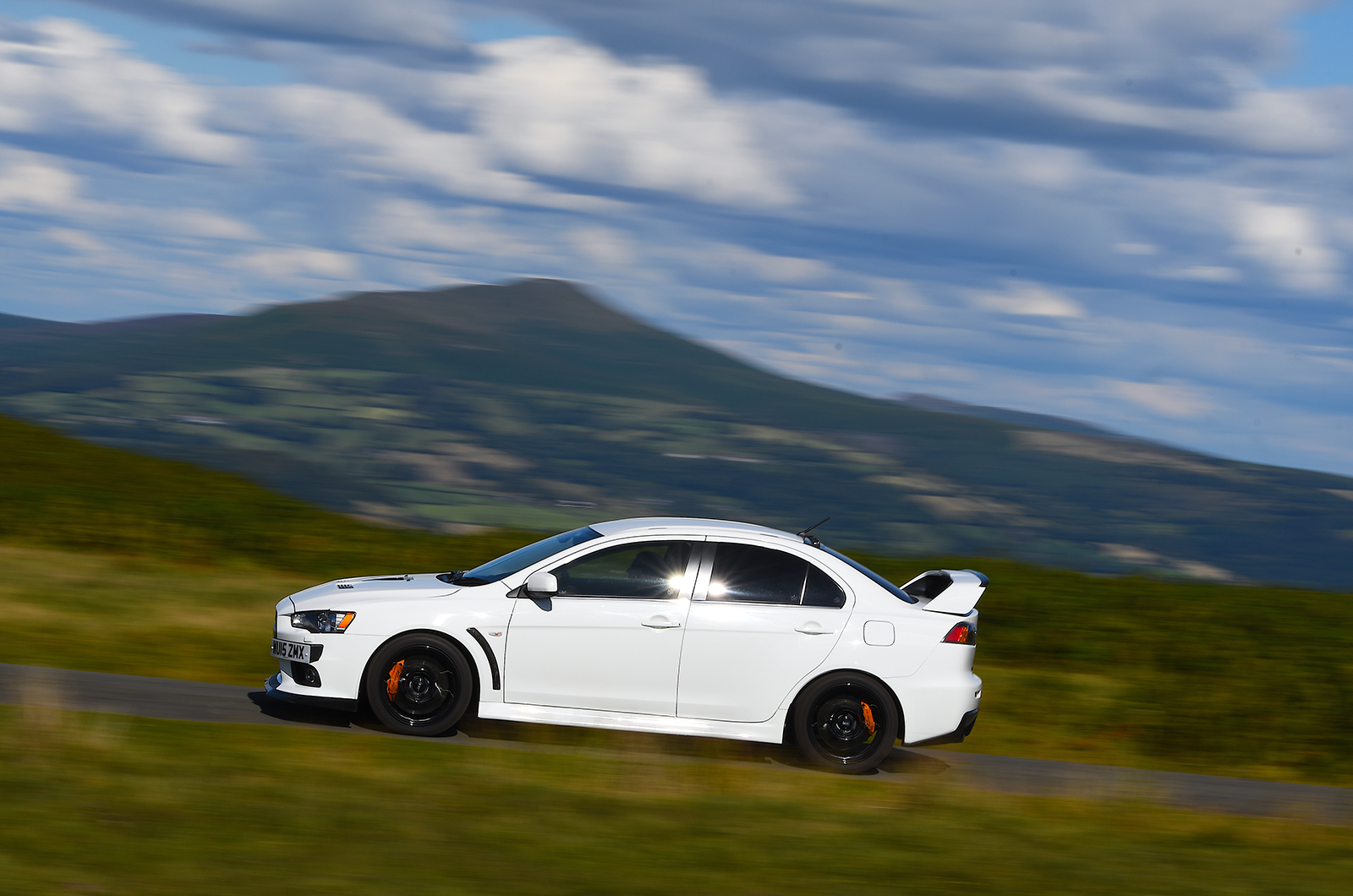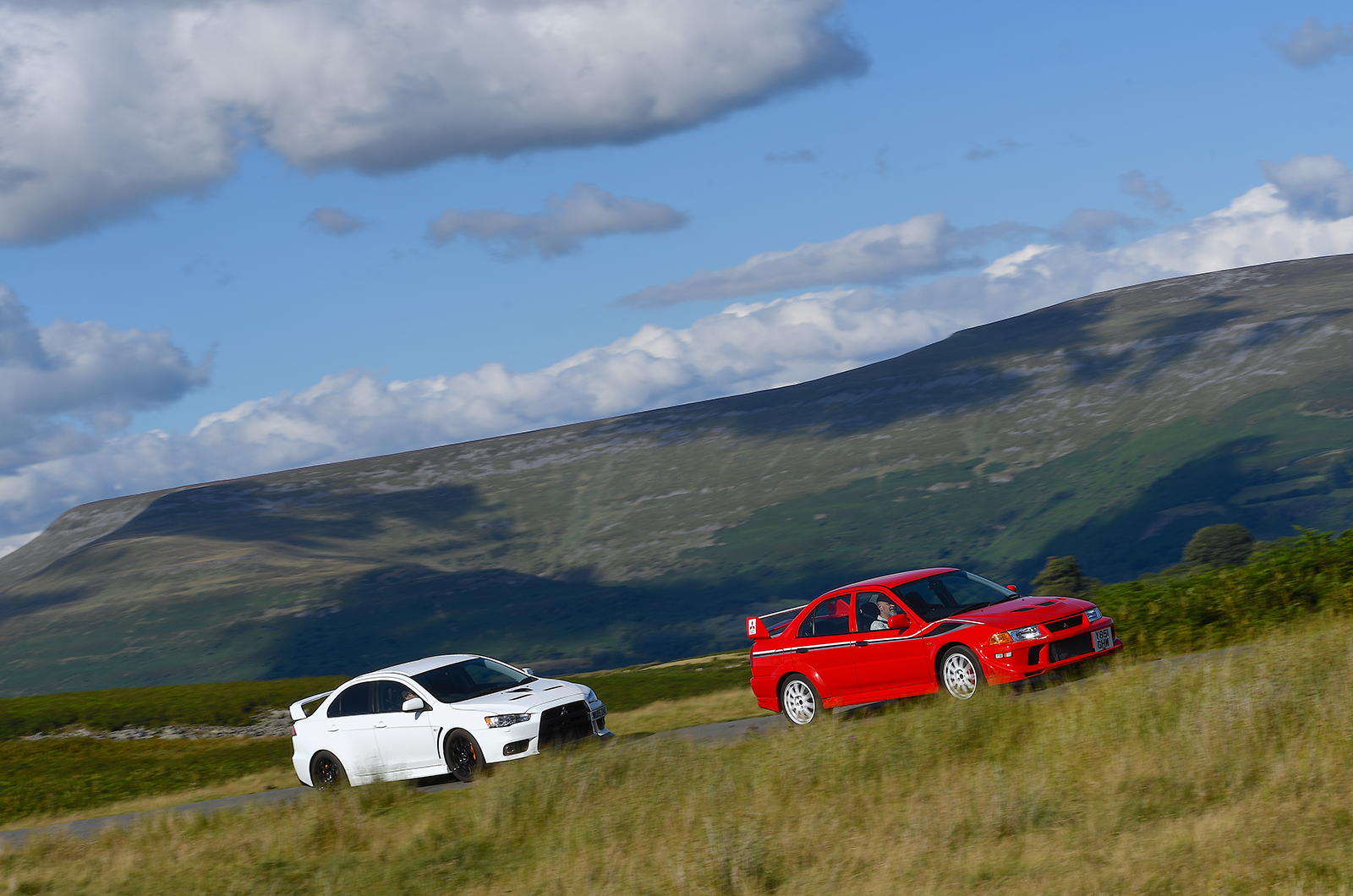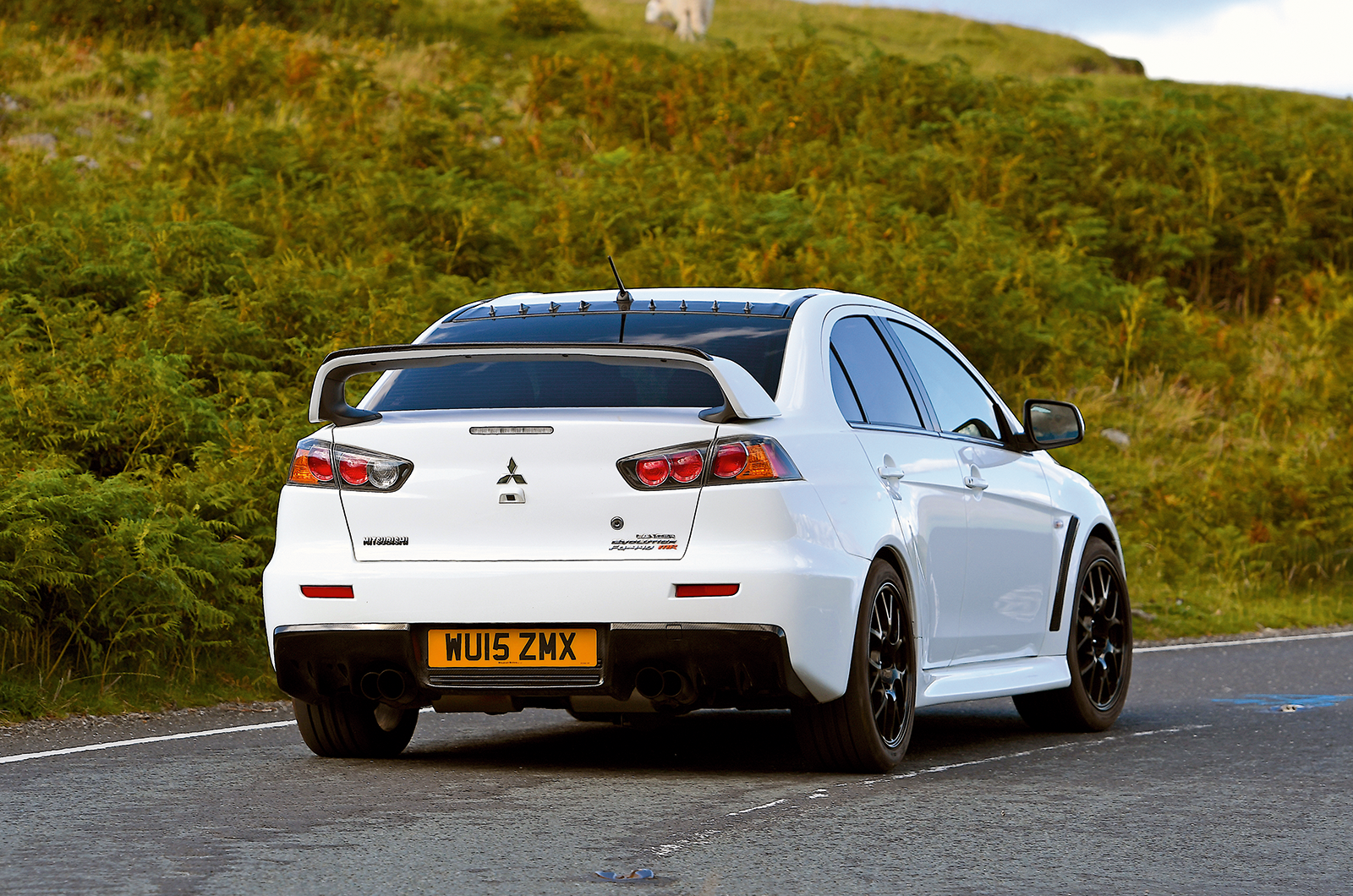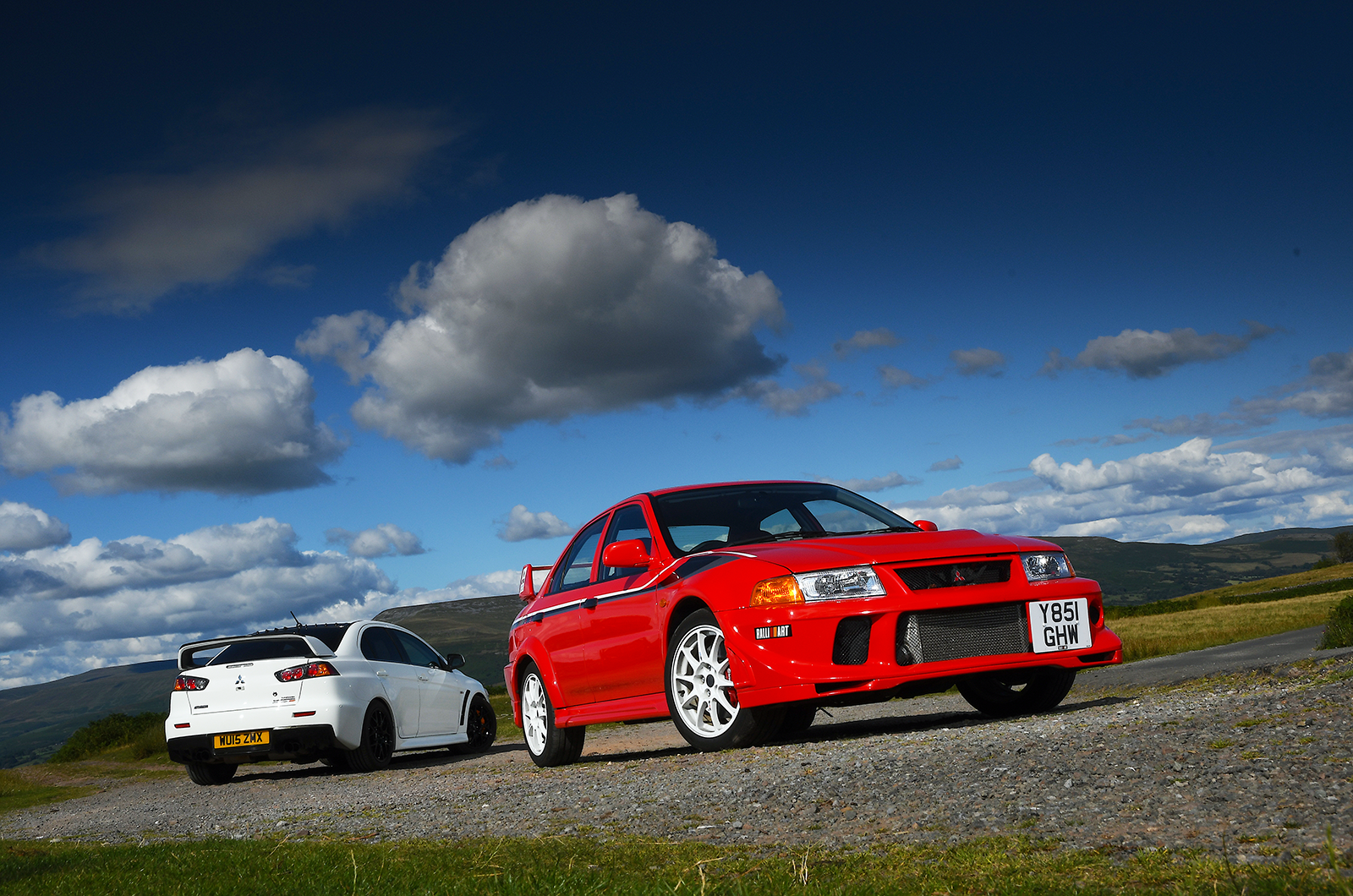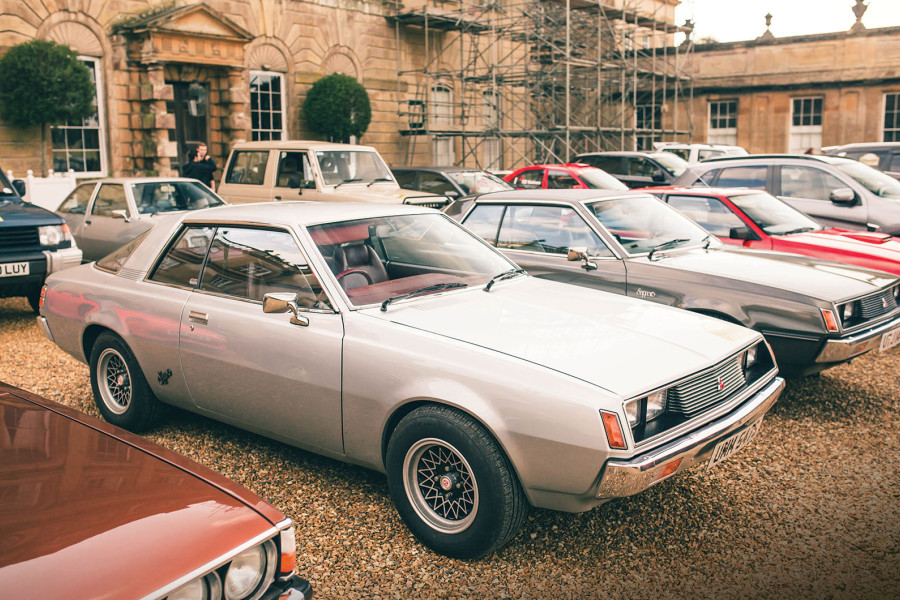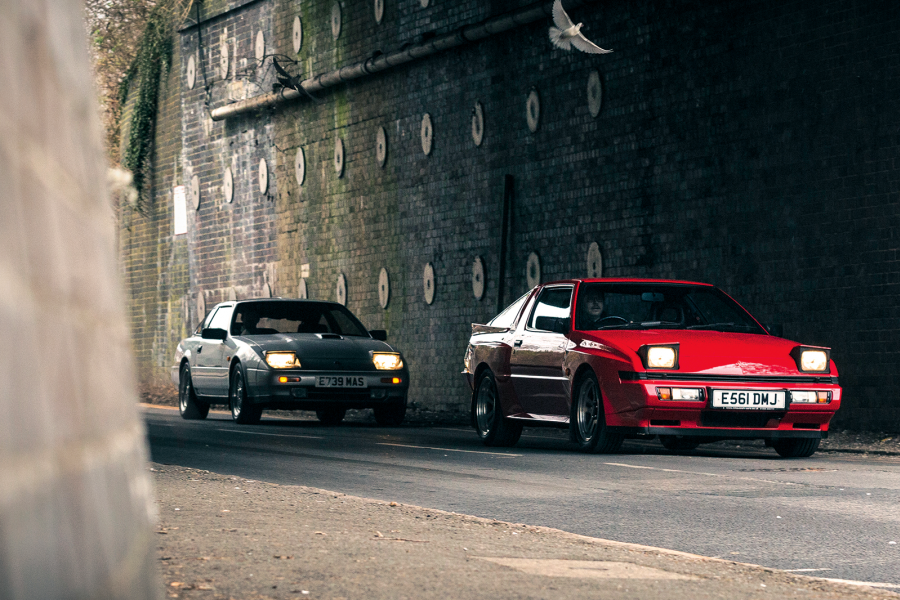Slide inside and the difference between the UK’s first and last is just as defined, though both carry the same indifference to interior design as all Evos.
The VI cabin is devoid of character, the dials and inverted rev counter marked with what looks more like faded red than the (probably) intended orange to offer the only colour against a wall of plain black plastic.
The main point of interest is the intercooler spray button on the transmission tunnel that the child in you can’t help but press.
It’s your usual turn-of-the-century saloon, with Ralliart stickers doing their best to remind you this isn’t just a Lancer, along with Mäkinen’s signature sewn into the red and black seats.
As you might expect, there is more luxury and more toys in the Evo X
It feels spacious like all tinny saloons, perhaps emphasised by the claustrophobic X’s low, chunky interior.
You soon wonder whether it might not have been the boy racer’s choice to be sitting so low when they cruised up and down seafronts in late Evos: they had no option.
Fire up the VI and there’s no sense of drama; the Evo X is much louder and more extrovert.
At anything below 3000rpm there’s a deep rumble to the X that only shifts high in the rev range – everywhere else it feels as though it is complaining that it is in the wrong gear, the whole car reverberating and rattling while you check and double check the rev counter. It’s relentless and, frankly, annoying.
The newer car has 440bhp and 412lb ft torque, with MIVEC variable valve timing
But its performance is extraordinary, offering a warp-speed pace that scatters the sheep into the Welsh hills and turns the shrubbery into a blur.
Each nailed throttle pins you to the seat, so long as ‘sport’ is engaged. If not it’s oddly sluggish and the dual-clutch gearbox lazy.
The paddles are attached to the column, too, which means you’re fishing, ungainly, to change gear anything off the straight-ahead.
The lineage is clear, but on the road they’re two very different prospects
The manual VI is the opposite in that it feels very mechanical and can get a little tiresome if you’re not precise enough with your changes.
But it’s effortlessly driveable, with so much composure and grip, where the X can be a chore.
And with no electrics trying to get involved in the VI except for that Active Yaw Control, it’s a more pure experience.
The ride is soft enough to seem supple and more flowing, aided by a higher stance that provides more feel, where the stiff Eibach-sprung X hammers every bump and crack with unremitting force, steamrollering it with no thought for the driver.
Mitsubishi might be leaving the UK market, but it has certainly left its mark
It feels quicker, as you’d expect for a 440bhp monster that will smash through to 60mph from rest in 3.8 secs.
That’s supercar quick, for £50,000 new – and backs up that FQ moniker, reputedly given because the cars are ‘F***ing Quick’.
Stamp on the incredible six-pot brakes and it springs onto its tiptoes, ready to dart and bomb on through, as if it lives to play a late-braking game.
Anything else and it’s simply not interested.
The X wears every aero device to aid its boxy shape
It’s engaging in a way that requires very specific circumstances, where the VI can be enjoyed with every crest or kink in the road.
In every respect the X is bigger and faster, but that isn’t necessarily better.
This was never really about which one is better, though; it’s more the beginning and end of the Evo’s story in the UK – and the relative disappearance of the marque.
The VI had all the mystique before, during and after bringing it together with the X.
Never was it about the X, which in itself and in the right setting is astonishing.
The X FQ-440’s aggressive styling hints at its raw pace, but the VI TME is a surprisingly supple road car
It just isn’t the Tommi Mäkinen Edition VI. And there is nothing it can do about that.
The VI was the peak for Mitsubishi in the WRC, and that is a feeling felt throughout the car; climbing in there is anticipation and climbing out there is satisfaction.
It simply delivers without any compromise: fast today, as then; comfortable; and still carries its star appeal.
It was never a fair fight. Which you suspect is how Subaru sometimes felt.
Images: John Bradshaw
Mitsubishi is selling its entire, 14-strong UK heritage fleet collection, including the two cars featured here, through Auto Auction on 1-30 April 2021. All cars are being offered without reserve. Find out more here.
READ MORE
Street fighters: Mitsubishi 3000GT vs Toyota Supra vs Nissan 300ZX
Subaru SVX: Japan’s XJS-beater
Quiet revolutionary: Mazda R130 Luce
Jack Phillips
Volvo-owning Jack Phillips is a contributor to and former Deputy Editor of Classic & Sports Car
